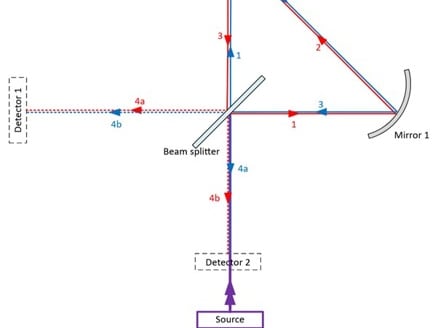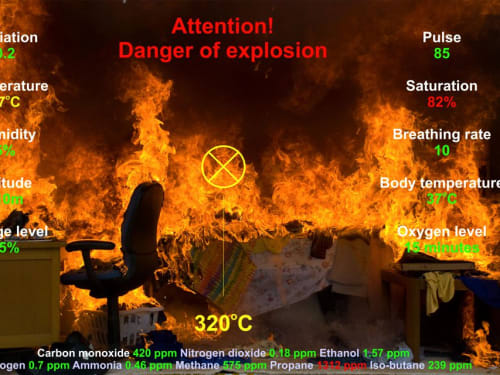Electronics
Our Focus:
Current communication systems for paralyzed individuals primarily rely on assistive technologies such as eye-tracking devices, speech-generating systems, and muscle-based switches. These tools require some residual physical ability and often suffer from slow response times and limited vocabulary. In battlefield communication, soldiers typically rely on radio-based voice transmission or hand signals.
This invention introduces a transformative approach to personal safety and evidence preservation by providing a mobile emergency call and recording system that is instantly triggered by voice-based hotword detection. ("It's Not a Wakeup word.
Most Fourier Transform FT spectrometers use 2D optical plane interferometry and produce an interferogram by either a moving mirror (Michelson) or a static curved mirror (Sagnac). However, these spectrometers only use 50% of incoming light and rest is redirected towards the source. We present a new 3D optical layout for a modified Sagnac interferometer using all incoming light.
There is a growing trend of increasing total power capacity and volumetric heat density in modern data centers. Next-generation electronic components generate high heat fluxes, requiring advanced and efficient cooling methods. The low energy efficiency of traditional air-based cooling systems is driving the shift toward immersion and liquid-based cooling solutions.
NanoTrap™ is a deployable, airborne particulate-binding agent designed to improve sensor accuracy in Industrial Internet of Things (IIoT) environments. Unlike traditional filtration or ventilation systems, NanoTrap™ does not require power, fans, filters, or structural integration. It is applied as a fine mist directly into the surrounding air,
The majority of electric vehicles possess a charging indicator light that becomes illuminated when the vehicle is charging. This indicator is only useful at the moment of plugging in the vehicle, when observing it from outside, or as one departs from their residence. A remote charging indicator could bring that information into the home.
This is a computer mouse that communicates with the computer using light as the form of energy, rather than electricity. (There is no category in this contest for this device).
The Light Mouse is a passive device with few parts, making it inexpensive to manufacture. The Light Mouse is not to be confused with an optical mouse which requires a cord or recharging.
This project presents the design of an ultra-low-power, hybrid-powered IoT sensor node tailored for deployment in remote and biodiverse regions such as the Amazon rainforest. The node integrates a solar panel, Li-ion battery, and power multiplexer (TPS2110A) to dynamically manage power sources with seamless switching, ensuring continuous operation even under fluctuating environmental conditions.
This project establishes a vehicle speed limit monitoring system that can operate in both offline and online modes and detect if a car is travelling faster than the posted speed limit on the road it is currently on.
We have developed a modular personal telemetry device. It allows you to determine a person's physiological data and environmental parameters. The system consists of two modules. One of them is attached to the patient's chest with a special strap. Its design includes built-in electrodes for measuring ECG, skin resistance, and chest expansion.
Page 4 of 5



.png)






